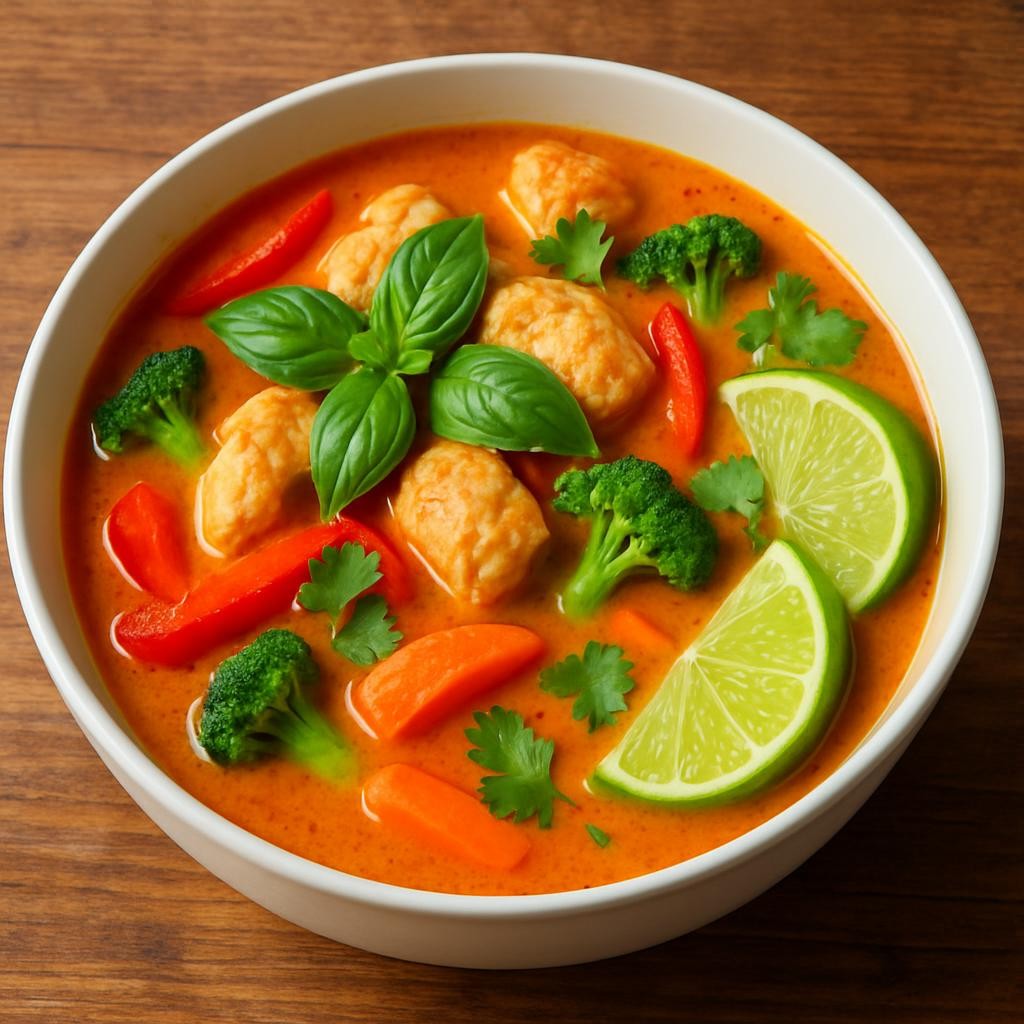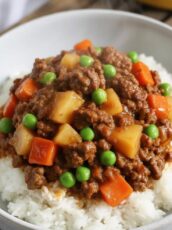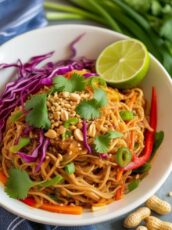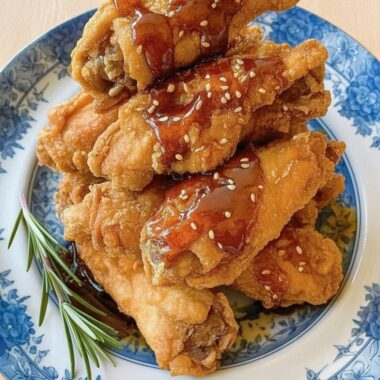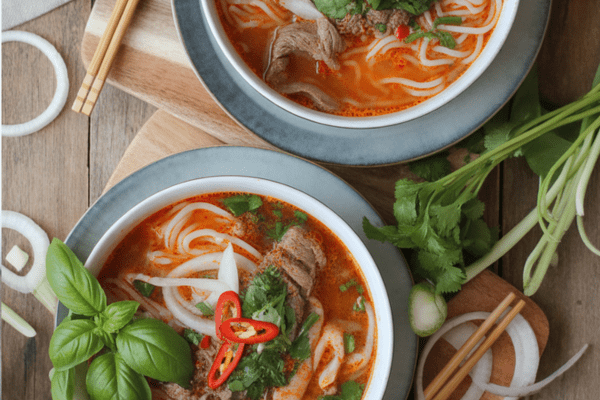Vietnamese Pho is a beloved noodle soup that captures the essence of Vietnamese cuisine with its aromatic, deeply flavored broth, tender meat, and fresh herbs. This dish is a perfect harmony of savory, fragrant and slightly sweet notes that transport your taste buds straight to the bustling streets of Hanoi. Pho is comforting yet invigorating, making it an excellent choice for any time of year, and it has gained a loyal following around the globe for good reason.
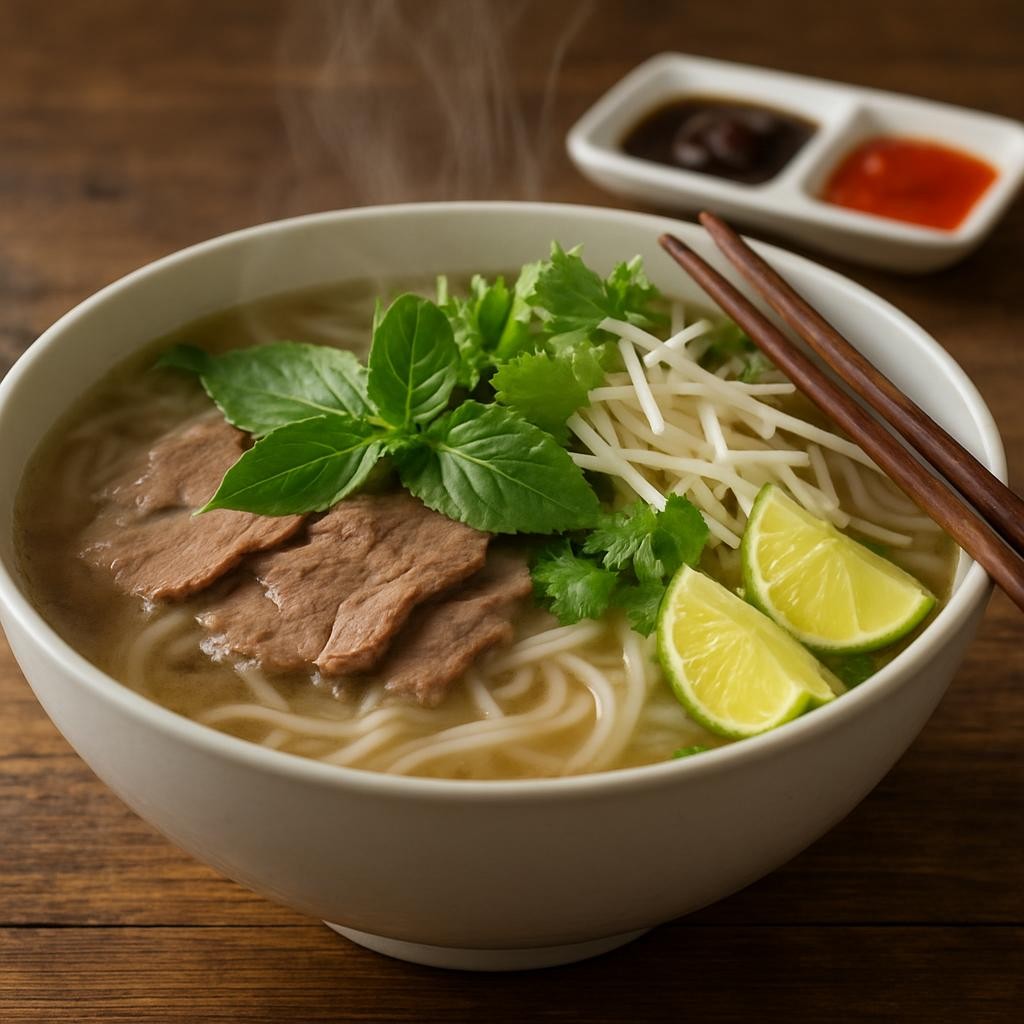
Why You Will Love This Recipe
This recipe for Vietnamese Pho is a delightful experience for your palate. The complex flavors of the broth, simmered for hours with aromatic spices, make it incredibly satisfying. It’s surprisingly easy to prepare, especially with a bit of planning, allowing you to enjoy a restaurant-quality dish in the comfort of your home. Whether you’re a meat lover or a vegetarian, this recipe can be tailored to suit your dietary preferences, making it a versatile option for family dinners or meal prep.
Tips and Tricks
- Choose the right cut of meat: For beef pho, go for cuts like brisket, flank, or shank for optimal flavor and tenderness. If using chicken, a whole chicken or bone-in thighs will add richness to your broth.
- Roast your spices: Lightly toasting the spices before adding them to the broth enhances their flavor. Use a dry skillet for this step.
- Strain the broth well: A clear broth is essential for that authentic pho experience. Strain your broth through a fine sieve to remove any floating impurities.
- Use fresh herbs: The garnishes are crucial! Fresh basil, cilantro, and lime add brightness and elevate the flavors.
- Don’t rush the simmer: Allowing the broth to simmer for at least 4 hours (or longer) is key to extracting the maximum flavor from the bones and spices.
Make Ahead Tips
You can prepare the broth a day in advance; it actually improves in flavor as it sits. Once cooled, store it in the refrigerator. The noodles can also be prepped ahead of time – just soak them in hot water until they are tender, then rinse them under cold water to stop the cooking process. Fresh herbs can be washed and chopped ahead of time, but add them just before serving to retain their freshness.

Recipe Variations
- Vegetarian Pho: Replace meat with a variety of mushrooms and use vegetable stock. Add tofu for protein.
- Spicy Pho: Add sliced jalapeños or sriracha to the broth for an extra kick.
- Pho with different proteins: Try pork or seafood for a different take; shrimp works beautifully with the aromatic broth.
- Cold Pho Salad: Transform your pho into a refreshing salad by serving the ingredients cold with a light dressing.
How to Serve
Serve your pho by placing the cooked noodles in a bowl, ladling the hot broth over them, and topping with slices of meat. Garnish with fresh herbs, bean sprouts, lime wedges, and chili slices. Serve with chopsticks and a soup spoon for an authentic experience. For an added touch, a side of hoisin sauce and sriracha allows guests to customize their bowls to their liking.
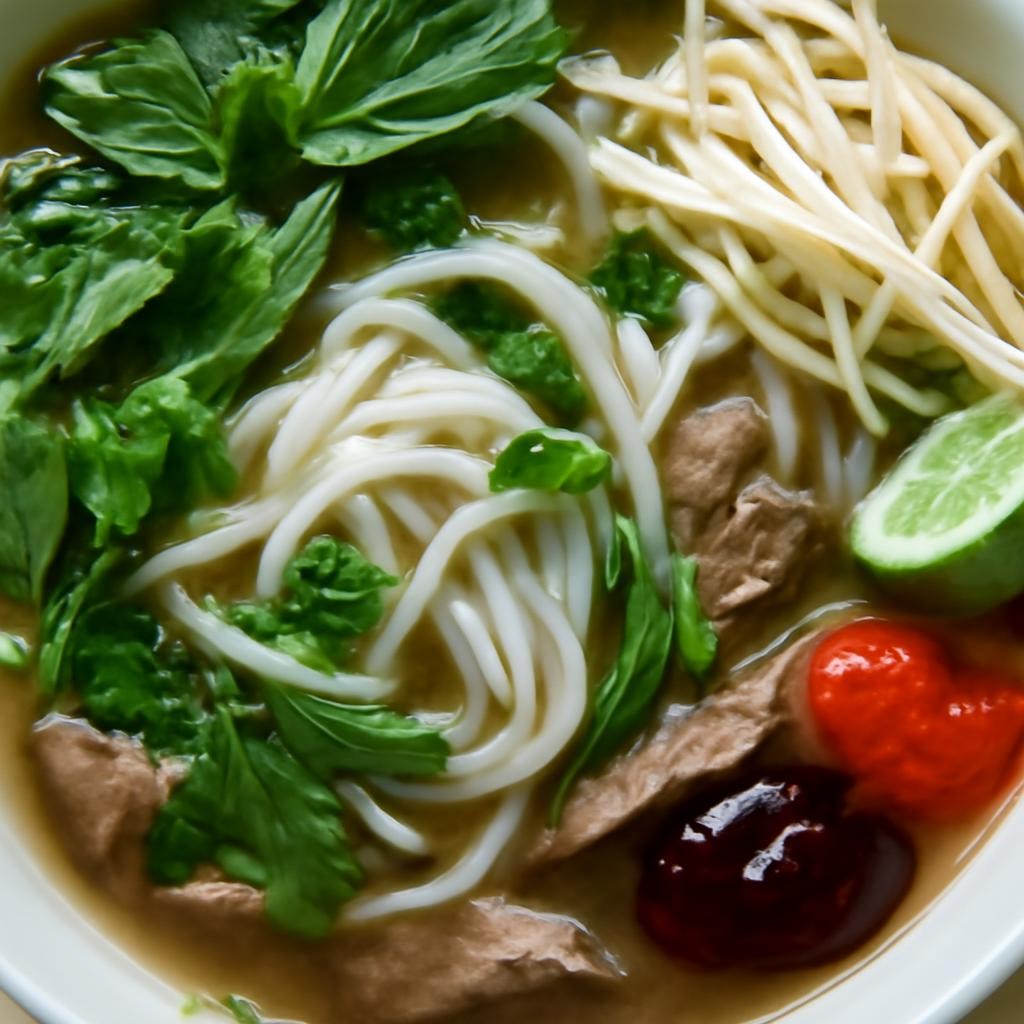
Pairing Suggestions
Pair your pho with a refreshing iced Vietnamese coffee for a delightful contrast of flavors. If you prefer something non-caffeinated, a chilled jasmine tea complements the aromatic notes of the soup beautifully. For dessert, consider light options like coconut sticky rice or fresh fruit spring rolls to finish the meal on a sweet note.
How to Store
Leftover pho broth can be stored in an airtight container in the refrigerator for up to 4 days. Noodles should be kept separately to avoid them becoming mushy. Broth can also be frozen for up to 3 months. Reheat the broth gently on the stove, and add freshly cooked noodles when ready to serve.
Equipment Needed
- Large stock pot for simmering the broth
- Fine mesh strainer for clarifying the broth
- Cooking thermometer (optional) to check meat doneness
- Knife and cutting board for slicing meat and vegetables
- Serving bowls for presentation

Dietary Adaptations
For a vegan version, use vegetable broth and replace the meat with tofu or a variety of vegetables. Ensure the hoisin sauce you use is free from animal products. For gluten-free options, substitute rice noodles with gluten-free alternatives or zucchini noodles.
Seasonal Adaptations
In winter, consider adding root vegetables like carrots and parsnips to the broth for added sweetness and heartiness. In summer, you can lighten the dish by using fresh summer herbs and adding more crunchy vegetables like cucumber.
Recipe FAQs
- Can I use store-bought broth? While it’s possible, homemade broth delivers the best flavor and authenticity.
- How do I know when the meat is done? For beef, it should be tender and easily sliceable. Chicken should reach an internal temperature of 165°F.
- How do I prevent noodles from sticking? Rinse the noodles after cooking and toss them with a little oil to keep them separate.
Vietnamese Pho
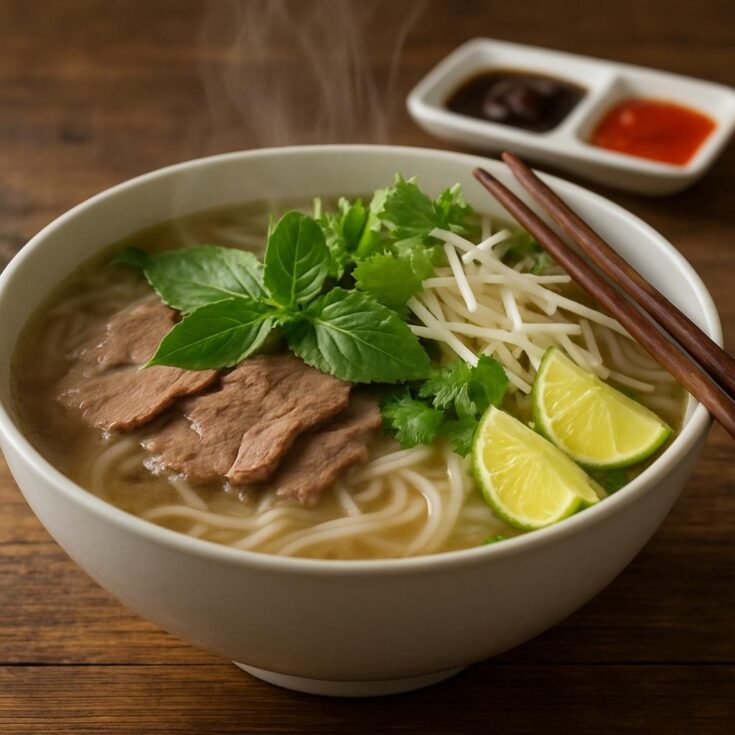
Vietnamese Pho is a beloved noodle soup that captures the essence of Vietnamese cuisine with its aromatic, deeply flavored broth, tender meat, and fresh herbs.
Ingredients
- 2 lbs beef bones (or chicken bones)
- 1 lb beef brisket (or chicken)
- 1 onion, halved
- 1 ginger root, halved
- 4-5 star anise
- 3-4 cloves
- 1 cinnamon stick
- 5-6 cups water
- 2-3 tablespoons fish sauce
- 1 tablespoon sugar
- Rice noodles (bánh phở)
- Fresh herbs (basil, cilantro, mint)
- Bean sprouts
- Lime wedges
- Sliced chilies
Instructions
- Begin by roasting the onion and ginger under a broiler until charred, about 5-7 minutes.
- In a large stock pot, combine the beef bones and enough water to cover them.
- Bring to a boil and then reduce to a simmer for 10 minutes. Skim off any scum that rises to the top.
- Add the roasted onion, ginger, spices, and remaining water to the pot. Simmer for at least 4 hours, adding water as needed to keep the bones submerged.
- After simmering, strain the broth through a fine mesh strainer into another pot.
- Discard solids and return the broth to the stove.
- Add fish sauce and sugar to taste, adjusting as necessary.
- Cook rice noodles according to package instructions. Drain and rinse under cold water.
- In serving bowls, place a portion of noodles, followed by slices of cooked brisket or chicken. Ladle hot broth over the top.
- Garnish with fresh herbs, bean sprouts, lime wedges, and chili slices. Serve immediately.
Nutrition Information:
Yield: 6 Serving Size: 1Amount Per Serving: Calories: 677Total Fat: 39gSaturated Fat: 16gTrans Fat: 1gUnsaturated Fat: 19gCholesterol: 212mgSodium: 879mgCarbohydrates: 15gFiber: 2gSugar: 4gProtein: 63g
Asianplated.com, occasionally offers nutritional information for recipes contained on this site. This information is provided as a courtesy and is an estimate only. This information comes from online calculators. Although allchickenrecipes.com attempts to provide accurate nutritional information, these figures are only estimates.
Final Thoughts
Making Vietnamese Pho at home might seem intimidating, but with this recipe, you’ll find that it’s a rewarding culinary adventure. The ability to customize flavors, the comforting aroma that fills your kitchen, and the joy of sharing this dish with family and friends make it truly special. So gather your ingredients, let the broth simmer, and enjoy a bowl of warmth that is rich in flavor and tradition. Happy cooking!

